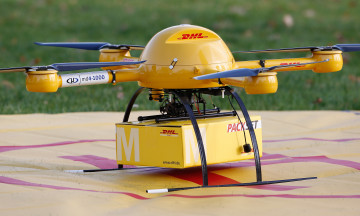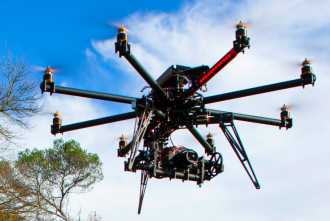 At the CES show at Las Vegas this week, Intel Chief Executive Brian Krzanich showed off a computer built into a jacket button and a wristband that transforms into a selfie-snapping flying camera drone.
At the CES show at Las Vegas this week, Intel Chief Executive Brian Krzanich showed off a computer built into a jacket button and a wristband that transforms into a selfie-snapping flying camera drone.
It says a lot about where Intel sees the future of computing. Gone are the days of number crunching business computers, instead the world’s chip makers are developing gadgets which are better at photographing their own users.
Already tourist destinations are full of people carrying their phones on sticks so that they can take snaps of themselves at famous monuments without needing a friend. Now it seems that Intel sees a future for machines that can take pictures of bald heads at famous monuments while at the same time navigating through a sea of Japanese drones re-enacting a narcissistic battle of Midway on the Spanish Steps.
Krzanich used most of his keynote to talk up Intel’s efforts in computerised apparel and other sensor-packed gadgets as consumers get bored with their tablets and start selling their kidneys for the next shiny thing.
Curie, a new button-sized computer for smart clothes, is due out later in 2015 and includes Bluetooth radio as well as the latest from Intel’s Quark line of low-power chips. However Krzanich did sound a little like an East End market barrow boy when he talked about “rings, bags, bracelets, pendants, and yes, even the buttons on our jackets.” They are not dodgy, not dodgy.
Intel is working with Oakley to launch a smart gadget for athletes later this year, Krzanich said. The chipmaker in December announced it was developing smart glasses with Luxottica, which owns the Oakley brand.
Krazanich also said that he was spending $300 million to get more women and minorities in the technology and the video game industries. Note that money will be spent training women and minorities, there is no guarantee that Intel or any other technology company will hire them.
Intel has a poor record of accomplishment employing women and some minorities. While it is happy to hire Chinese and Indian workers, because they are nice and cheap, only a quarter of Intel’s US employees in 2013 were women and 12 percent of its workforce were Hispanic or African American.
Last year Intel made a huge mistake by backing the misogynistic GamerGate campaign to pull advertising from gaming news sites who dared to slam sexism in the gaming industry. In the end it changed its mind and resumed advertising.
 The rise in e-commerce is fueling rapid growth in parcel delivery volumes, a market expected to grow to $665 billion by 2030 according to a new analyst report.
The rise in e-commerce is fueling rapid growth in parcel delivery volumes, a market expected to grow to $665 billion by 2030 according to a new analyst report.







